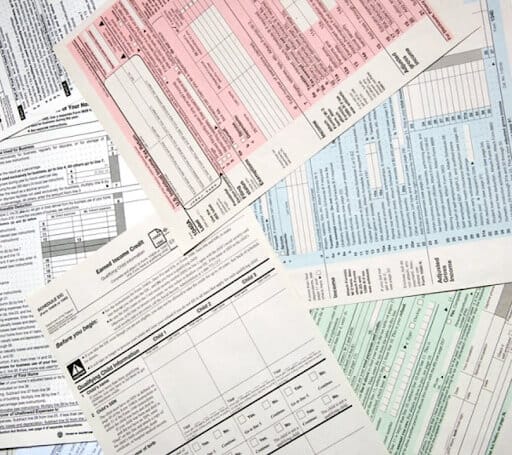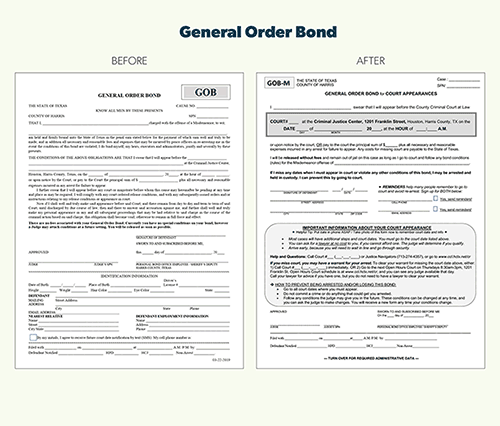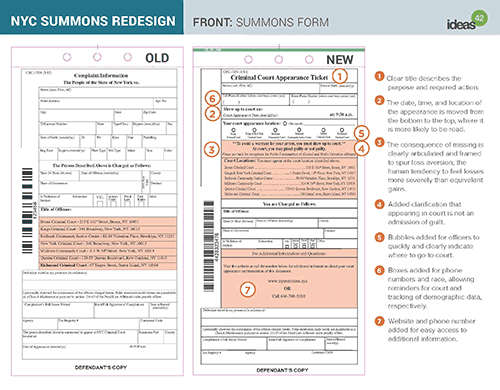
Around the country, courts are focused on improving appearance rates—to move cases forward efficiently, reduce warrants for nonappearance, and increase access to justice. To help courts and partners discover and adopt effective approaches, the (Un)warranted team at ideas42 has crafted this four-part series breaking down leading practices. This first installment will focus on behaviorally designed court forms.
Behaviorally Designed Court Forms
Court forms are so simple yet so powerful. Court forms, such as citations, summonses, agreements to appear, bond paperwork, and more, can be redesigned using behavioral science principles to help the court user understand and meet their appearance obligations.
The language and visual design in court forms have an important impact on the court user’s response. Behaviorally designed forms that emphasize the key details of the next court date, clarify what to expect at court and what the consequences of missing court may be, and describe how to access help can reduce nonappearance. For example, New York City decreased nonappearances in response to summonses for low-level offenses by 13% with a few smart updates to the summons language and formatting.
Below are some tips for developing effective, behaviorally informed court forms.
Give the key info top billing
Effective forms have the make-or-break details that the court user needs to know at the top. This includes emphasizing the court date, time and location, as well as giving your form a clear and meaningful title (think: “Notice to Appear in Court,” not “State v. Defendant”).
Formatting is your friend
Forms can include bolding, color, and elements like text boxes to help the key details, like appearance date and time, stand out. These should be used selectively—if everything is bold, nothing stands out. And forms should avoid text in all caps: no one likes to be yelled at, and text in all caps may be less legible to readers.
Focus on accessibility
Courts should provide digital and paper versions of forms adapted for court users with impaired vision, as well as forms translated into common languages other than English.
Always get feedback from court users
Before rolling out redesigned forms, courts should show them to at least a few court users to make sure that the changes are helpful.
Redesigning court forms is something that any court can do: generally, all it costs is a little time. Even small changes can make an important difference. Here’s some form design inspiration from our work:
Redesigned Harris County
Court Notification Forms

Redesigned New York City Summons Form
Ready to Redesign?
The National Guide to Improving Court Appearance has more in-depth guidance on redesigning key court forms. And resources like Forms Camp from the National Center for State Courts and the Plain Language Guide from the National Association of Court Managers have lots more tips and examples specifically geared toward courts.
Reach out to our team at ideas42 for help or to chat about ways to upgrade the forms your court uses! unwarranted@ideas42.org
Coming next month: evidence-based tips for effective court date reminders.
Sign up for our mailing list to receive future tips directly to your inbox. Just be sure to select Safety & Justice in the Areas of Interest field.






